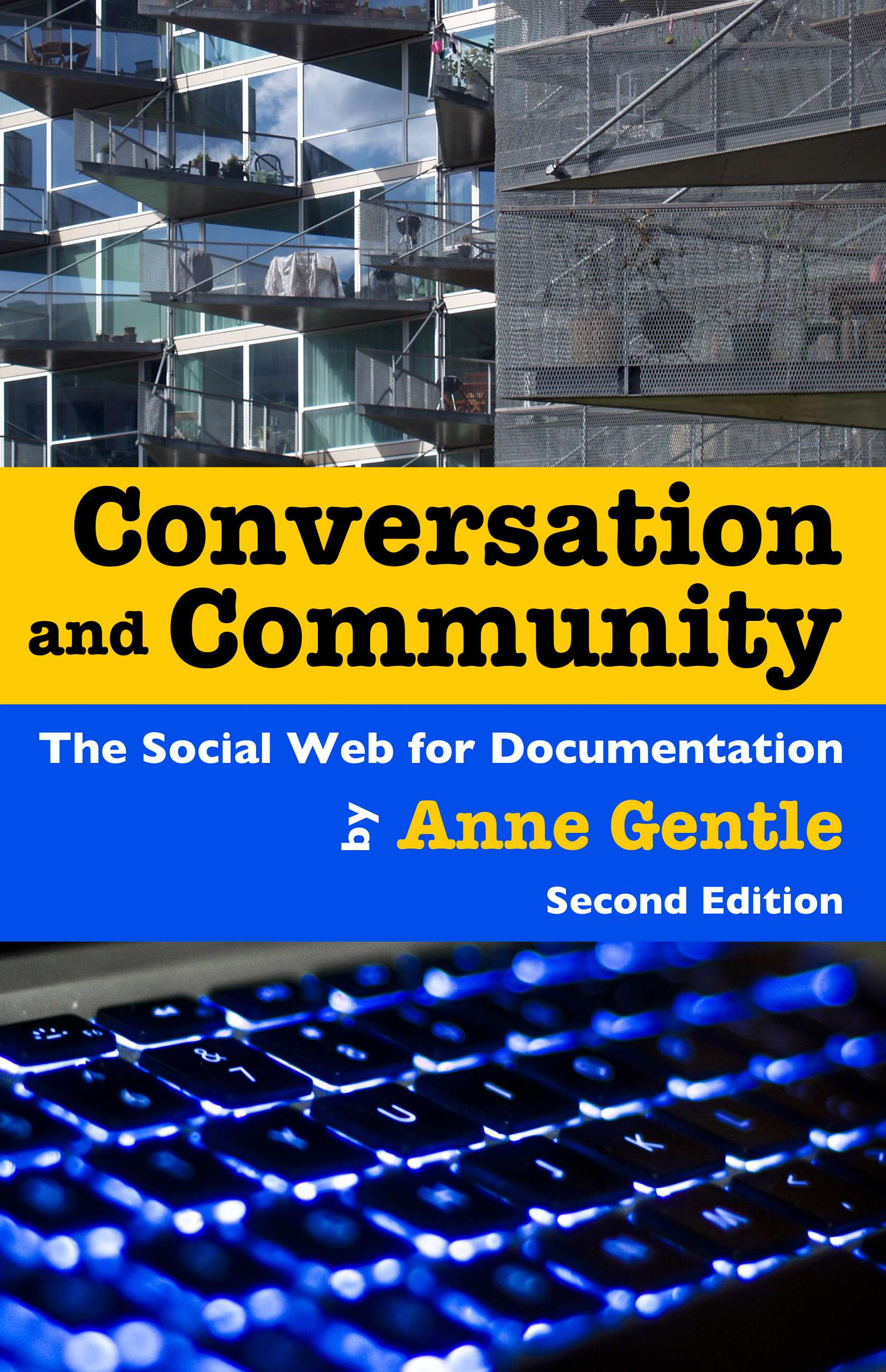
Love this new cover, both photos are Creative Commons licensed once again. Let’s look between the covers though!
While thinking about the second edition and how three years had passed, I was pleasantly surprised that we could get to the three year mark with the book’s content remaining relevant and accurate. Seems nearly impossible on such a fast-moving topic as the social web. Yet while looking through the tools chapter to update it, we mostly tested URLs and looked at the categories. Surprise, nearly all example tools are still relevant and useful to technical documentation. Not all the exact examples still existed, but that was just interesting to revisit.
Next, I examined the book for three areas of improvement – organization, content updates and additions based on my most recent experiments and experiences with OpenStack at Rackspace.
Reorganization
With the tools being so much more a part of every day life and work now, I have moved the “Concepts and Tools of the Social Web” chapter to become an appendix. It also lets readers go right into “Defining a Writer’s Role with the Social Web” where I walk through a strategic approach to the social web. I also moved an entire section about managing community methods into a new chapter titled “Analyzing and Measuring Web Techniques” to expand on the management practices and business value tie-ins.
Additions
Some of the best additions to the book are interviews with practitioners I’ve met over the years who are doing community-based documentation already. It’s a balanced mix of open source communities and corporations using community to add value to their offerings. These are scattered throughout the book. I answered these same questions as well about how my current work is structured.
Based on my observations with documentation comments over the last year and a half, I added plenty of commentary and guidance to “Commenting and Connecting with Users.” Selecting and implementing a commenting system is chockful of requirements and guardrails for comments included on every page of your documentation. I also give an example of how to process comments daily, weekly, and moderate comments.
I added some additional information to the wikis chapter based on my recent experience with a Google Summer of Code documentation summit, comparing and contrasting “typical” wiki writing to planned writing. Many wikis have become web content management systems that encourage collaboration, so while I continue to address wikis in a separate chapter, the community and conversation building remains at the heart of my book. For wiki-specific tactics using Confluence, I’d highly recommend Sarah Maddox’s book, Confluence, Tech Comm, Chocolate, which I reviewed previously.
I added a chapter about content strategy for community documentation. I’m definitely sensing a strategic specialty opening up right now, and want to keep exploring it through the lens of content strategy. There’s a great case study included as well about Autodesk and their learning communities. An interview with Victor Solano with Scot Abel lets you “explore how the software giant has leveraged the power of the crowd, software standards, and content management to meet the fast-changing needs of its customers.” I found it thought-provoking and inspiring.
If anyone would like a signed first edition, please let me know by sending an email to annegentle at justwriteclick dot com. We’ll work out shipping and payment (Paypal or check-in-the-mail) with the few remaining copies I have!